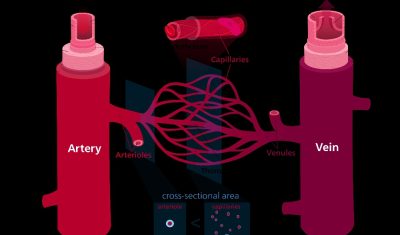
Blood is the vital fluid of life, responsible for transporting essential substances throughout the body, and it exists in two major forms—oxygenated blood and deoxygenated blood. While oxygenated blood is rich in oxygen and delivers it to tissues and organs, deoxygenated blood plays an equally important role by carrying carbon dioxide and other metabolic wastes away from the body’s cells. Deoxygenated blood is the darker form of blood, usually bluish-red in veins, and it forms an essential part of the circulatory system because it ensures that waste gases are removed and transported to the lungs for exchange. Understanding deoxygenated blood, its functions, composition, and circulation not only helps us appreciate how the human body maintains balance but also reveals why the process of respiration and circulation must work hand in hand for survival.
Table of Contents
- What is deoxygenated blood?
- Composition of deoxygenated blood
- Functions of deoxygenated blood
- Circulation of deoxygenated blood
- Revision questions and answers
Understanding Deoxygenated Blood: Composition, Functions, and Circulation
What is Deoxygenated Blood?
Deoxygenated blood is blood that has delivered oxygen to the body’s tissues and is now carrying carbon dioxide and waste back to the lungs for purification. Unlike its depiction in medical diagrams as blue, it is actually dark red due to its low oxygen levels.
Composition of Deoxygenated Blood
Deoxygenated blood contains:
- Low Oxygen Content – It has significantly less oxygen compared to oxygenated blood.
- High Carbon Dioxide Content – It carries carbon dioxide, a waste product from cellular activities, to the lungs for exhalation.
- Metabolic Waste – It transports substances like urea and lactic acid to the kidneys and liver for elimination.
- Essential Nutrients and Hormones – Despite being deoxygenated, it still carries vital nutrients and hormones to the body’s organs and tissues.
Functions of Deoxygenated Blood
Deoxygenated blood plays a key role in:
- Carbon Dioxide Removal – It transports CO2 from tissues to the lungs for exhalation.
- Waste Transport – It carries metabolic waste to organs for disposal.
- Nutrient Delivery – It continues to supply essential nutrients to cells.
- Body Temperature Regulation – It aids in redistributing heat to maintain body temperature.
How Deoxygenated Blood Circulates
The circulation of deoxygenated blood follows this path:
1. Returning to the Heart:
- Blood from tissues flows through veins into the right atrium via the superior and inferior vena cava.
- It then moves through the tricuspid valve into the right ventricle.
2. Lung Circulation:
- The right ventricle pumps the blood through the pulmonary valve into the pulmonary arteries.
- In the lungs, carbon dioxide is exchanged for oxygen in tiny air sacs called alveoli.
- The now oxygen-rich blood returns to the left atrium through the pulmonary veins, completing the cycle.
Why Efficient Circulation Matters
Proper circulation of deoxygenated blood is essential for health. Issues in circulation can lead to:
- Oxygen Deficiency (Hypoxia) – When tissues don’t receive enough oxygen, leading to fatigue and organ problems.
- Heart Conditions – Poor blood flow can cause heart failure, leading to swelling and fluid buildup.
- Lung Disorders – Impaired gas exchange can contribute to conditions like COPD and respiratory distress.
Summary
Deoxygenated blood carries carbon dioxide and waste from tissues back to the lungs for purification. It appears dark red due to its low oxygen levels. Its composition includes low oxygen, high carbon dioxide, metabolic waste, and essential nutrients.
Its primary functions involve removing carbon dioxide, transporting waste, delivering nutrients, and regulating body temperature. Circulation begins as blood from tissues flows into the right atrium through veins, then moves into the right ventricle. From there, it is pumped to the lungs, where gas exchange occurs, and oxygenated blood returns to the left atrium.
Efficient circulation is crucial to prevent oxygen deficiency, heart conditions, and lung disorders. Understanding this process highlights the body’s ability to maintain oxygen balance and overall health.
READ ALSO – Oxygenated Blood and its Functions, composition and Circulation
Revision Questions and Answers on deoxygenated blood and its functions
1. What is the primary function of deoxygenated blood?
- The primary function is to transport carbon dioxide and metabolic waste from body tissues to the lungs for removal.
2. Why is deoxygenated blood dark red instead of blue?
- It appears dark red due to its lower oxygen content, not blue as commonly depicted in diagrams.
3. How does deoxygenated blood travel back to the heart?
- It flows through veins into the right atrium via the superior and inferior vena cava before moving into the right ventricle.
4. What happens to deoxygenated blood when it reaches the lungs?
- In the lungs, carbon dioxide is exchanged for oxygen in the alveoli, and the oxygenated blood returns to the left atrium for circulation.
Conclusion
Deoxygenated blood is vital for removing waste, regulating temperature, and maintaining oxygen balance. Understanding its function and circulation helps us appreciate how efficiently the body manages essential processes to keep us alive and healthy.
